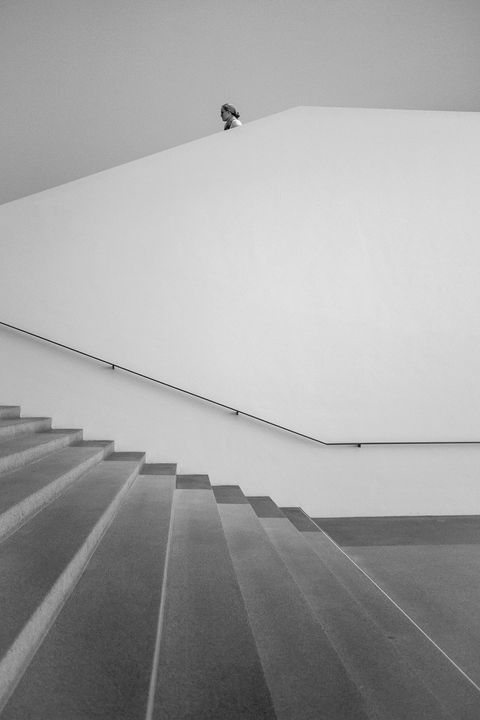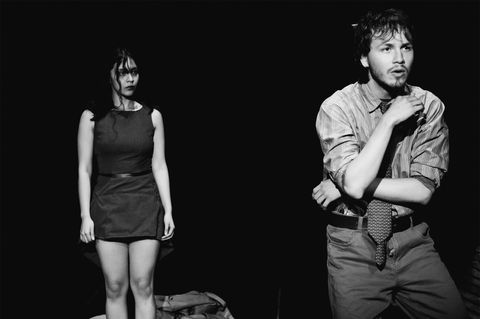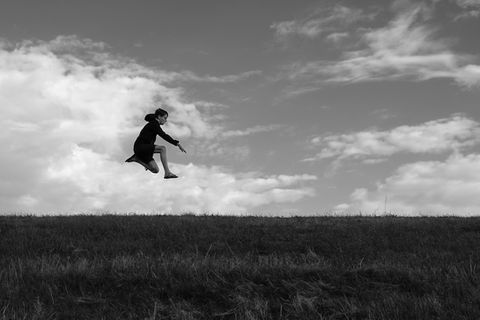
THE BIGGER PICTURE
July 3, 2020
INTERVIEW
PHOTOGRAPHY Stefan Hellweger
INTERVIEW Karin Svadlenak
Photographer Stefan Hellweger finds inspiration in art, science, music, and the photography of others. He thinks that having a personal or emotional connection to a scene or subject helps to get good pictures, if you can translate that emotion into your photographs. To Stefan, human presence in photos adds interest, and he mostly enjoys walking about the streets of his home town and documenting life. Beyond that, content is important to him, and he seeks to use his photography to draw attention to particular causes or issues.

If your pictures are not good enough you weren't close enough. - Robert Capa
“This might be the most quintessential quote for everybody in street and documentary photography. Although I think it is often misunderstood. It is not only about physical closeness (which is a good thing in these genres) but being closely related to the scene and the atmosphere you are about to show in your photographs.”
IN CONVERSATION WITH STEFAN HELLWEGER
TPL: Stefan, when did you start getting interested in photography?
SH: Like probably many I was taking pictures of traveling, parties, family events and so on all my life. First with analog film cameras, later digital but always in auto mode. The passion grew when I bought my first camera with easy access to all the basic settings for exposure, a Fujifilm X-M1. It was very soon when I realized two things. First, almost every shot gets instantly more interesting if it shows some kind of human presence. Second, learn how to use every camera setting to your benefit and read as much as you can about composition.
TPL: Where do you find your inspiration?
SH: In art, science, music, other photographers...Pretty much everything that surrounds me in daily life. To name one thing specifically, maybe news. When reading newspapers or seeing the news on TV or the internet I often ask myself what moments I would like to capture if I were there.
TPL: Do you have a favourite genre of photography?
SH: Definitely street photography and documentary photography. But although I am really not good at it, I also enjoy seeing good landscape photography, which is quite hard to find in my opinion.
TPL: Has your style of photographing changed since you first started?
SH: When I started doing street photography I was scared as hell to get too near to my subjects. I accepted that it is part of the game to be near the people you are taking pictures of, and so I got closer and closer. Meanwhile I try to take a step back again and get more of the context into the frame as well.
TPL: Do you have a favourite place(s) to photograph?
SH: Not in particular. I think you can take great pictures almost anywhere. Just make the best of it. Even if you hate a place. Hate is a strong emotion. Use it in your photography and show the viewer why you hate that place.
TPL: Do you prefer to photograph alone or with friends?
SH: That depends on my mood. I love going out shooting with one or two friends, usually from the Munich Street Collective. But there are also times when I have to put my headphones on and roam around on my own.
Almost every shot gets instantly more interesting if it shows some kind of human presence.

TPL: Often you focus really closely on people in your street photography. How do you go about it?
SH: Actually it is just something you have to get used to. A lot of people won't even realize that you are taking pictures of them when you are that close.
TPL: Do you have a preferred lens/focal length?
SH: Definitely 35mm, in my case, as a Fuji shooter the Fujinon XF 23mm f2.0
TPL: There are so many different rules about what you can and cannot photograph in different countries. Are you ever worried about legal issues when taking street photos in Germany? How do you deal with it?
SH: I try to simply not care about it. I never got in any trouble, and even if people don't want to have their picture taken you can still delete it.
TPL: What characteristics do you think you need to become a 'good' photographer? Any tips or advice for someone just starting out?
SH: Patience and persistence. It can be a little bit frustrating walking around in a city for a whole day and not to get even one good shot, but that's just part of the game. Then there will be days when you get one shot after another. Try to find your flow with some "easy" shots like silhouettes and work your way up from there. And try to stick with the classic focal lengths for street photography between 28mm and 50mm. When starting out it is tempting to use a telephoto lens, but it is actually quite hard to take good photographs with long focal lengths in this genre, most shots will just look like you are a creep.
TPL: Are there any special projects you are currently working on?
SH: I'm thinking about how I could help the Black Lives Matter movement with photography.
TPL: “When I am not out photographing, I (like to)…
SH: Love being outdoors with my dog, thinking about this and that.”

Stefan Hellweger's approach to photography is unique and inspiring. He looks to capture the emotions of a scene as well as the content, and he seeks to use his photography to bring attention to causes and issues that he cares about. If you would like to stay updated with Stefan's new projects, be sure to connect with him and follow his journey.






























